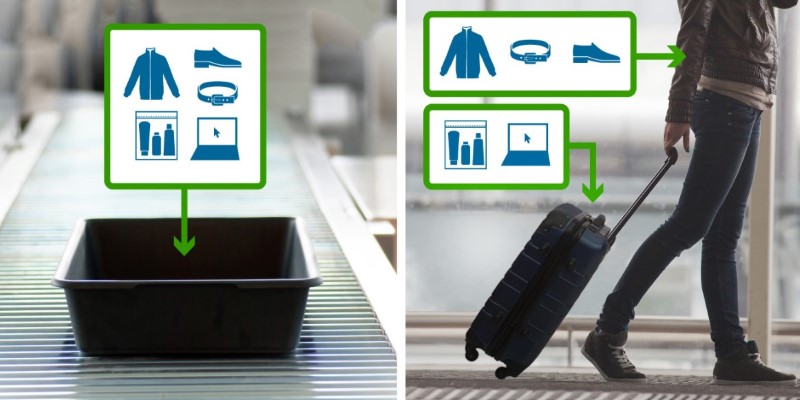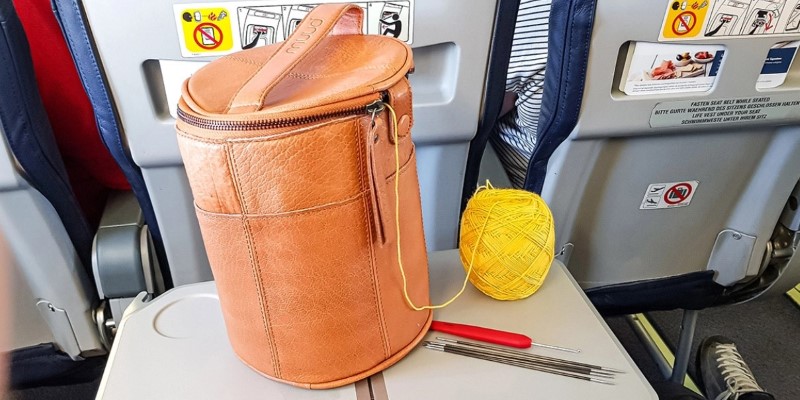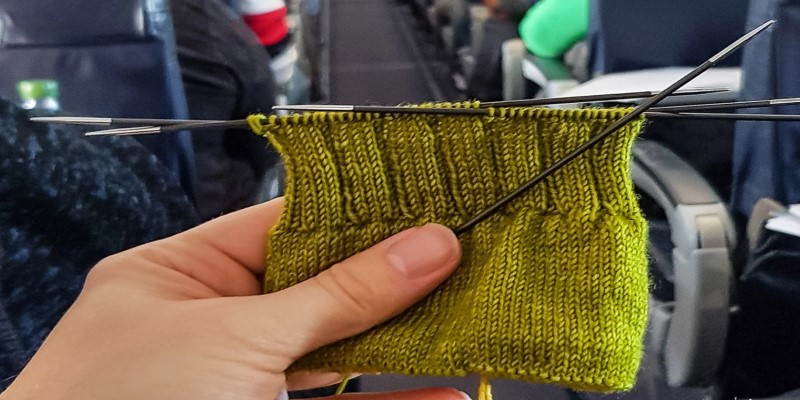Traveling can be stressful, especially if youre an avid knitter who doesnt want to leave your beloved crafting tools behind. The Transportation Security Administration (TSA) has specific guidelines for what you can and cannot bring on board, and understanding these rules can save you time and hassle at the airport.
Many knitters often ask: Can I bring my knitting tools through TSA security? The good news is that TSA has clear policies regarding knitting tools, but there are a few nuances you should be aware of to ensure a smooth journey. In this article, we'll delve into the specifics of TSAs regulations on knitting tools, offering you peace of mind as you prepare for your trip.
Navigating TSA with Knitting Tools: What You Need to Know
Traveling with knitting tools might seem daunting if you're unsure about TSA regulations, but with a bit of preparation, you can ensure a hassle-free experience. TSA generally permits knitting tools in both carry-on and checked luggage, but understanding the nuances can help you avoid any unexpected issues. Whether you're flying domestically or internationally, knowing the rules and packing your tools carefully will allow you to enjoy your knitting projects without worry.
Can You Bring Knitting Tools Through TSA Security?
Yes, you can bring knitting tools through TSA security, but there are important guidelines to keep in mind. According to TSA regulations, knitting tools are allowed in both carry-on and checked luggage. This is a relief for knitters who want to pass the time during flights or who fear that their delicate projects might be damaged if packed in checked baggage. However, while knitting tools are generally permitted, its essential to understand the potential exceptions and considerations that may affect your experience.
Understanding TSA's Official Guidelines
TSAs guidelines explicitly state that knitting tools are allowed in carry-on bags. The rationale behind this decision lies in the fact that knitting tools, though pointed, are not considered to pose a significant security risk. TSA agents are trained to recognize the difference between knitting tools and more dangerous items like knives or box cutters. As a result, knitters can confidently bring their tools through security, with some caveats.

Its important to note that while TSA has a national policy allowing knitting tools, individual agents have the final say at the checkpoint. This means that while the general rule is permissive, there may be instances where an agent decides that a particular set of tools poses a risk. This is more likely with particularly sharp or large tools, such as those made of metal. In such cases, being prepared to discuss your knitting project and showing a friendly attitude can go a long way in ensuring youre allowed to bring your tools on board.
The Type of Knitting Tools Matters
While TSA allows knitting tools, the material and size of the tools might influence how security perceives them. Metal tools, for example, may raise more concerns than bamboo or plastic ones due to their durability and pointed nature. If youre traveling with metal tools, it might be wise to carry a backup set made of a less conspicuous material in case the agent deems them too sharp.
Similarly, the size of your tools could affect their approval. Larger tools, particularly those used for chunky knitting projects, might attract more attention. In contrast, smaller tools, such as those used for sock knitting, are less likely to be seen as a threat. For knitters concerned about the potential for their tools to be confiscated, opting for circular tools instead of straight ones might be a good idea. Circular tools are connected by a flexible cord, which can make them appear less threatening and easier to pack.
Other Knitting Accessories and TSA Rules
Beyond the tools themselves, knitters often travel with a range of other tools, such as scissors, stitch markers, and measuring tapes. These items also fall under TSAs purview, and understanding the rules for each can help you avoid delays at security.
Small scissors with blades shorter than 4 inches are generally allowed in carry-on luggage. However, larger scissors, or those with particularly sharp blades, may be confiscated. To avoid issues, consider bringing thread snips or safety scissors designed specifically for travel. Stitch markers, measuring tapes, and other small tools typically do not raise concerns. However, it's still a good idea to keep them neatly organized to avoid any confusion during the screening process.
International Travel and Knitting Tools
If youre traveling internationally, the rules regarding knitting tools may vary depending on your destination. While TSAs guidelines apply within the United States, other countries may have stricter regulations. Before your trip, its wise to research the specific rules of the country youre visiting. Some countries, particularly those with more stringent security protocols, may prohibit knitting tools entirely or require them to be packed in checked luggage.
Tips for a Smooth Travel Experience with Knitting Tools
To ensure that your travel experience with knitting tools goes smoothly, consider the following tips:
Pack Your Tools Carefully
Place your knitting tools in a protective case or wrap them in a soft cloth to prevent damage and make them easy to access during security screening.
Be Prepared to Explain
If questioned by a TSA agent, be ready to explain that youre carrying knitting tools for crafting purposes. Having your project visible in your bag can help demonstrate that your tools are not a threat.

Carry a Backup
Consider bringing a backup set of tools made of a different material, such as plastic or bamboo, in case your primary set is not allowed through security.
What to Do if Your Knitting Tools Are Confiscated
If TSA confiscates your knitting tools, stay calm and polite. First, ask if they can be placed in your checked luggage if they are accessible. If not, inquire about mailing them to your destinationmany airports offer mailing services for items that can't be carried on board. Alternatively, consider replacing them after security if they're inexpensive. To avoid future issues, traveling with less valuable or disposable tools can minimize the impact of unexpected confiscations. Maintaining a positive attitude can also help resolve the situation more smoothly.
Conclusion
Traveling with knitting tools doesnt have to be stressful. By understanding TSA guidelines and preparing in advance, you can bring your knitting tools without worry. While TSA generally permits tools in carry-on luggage, its important to remember that agents have the final say. Being polite, informed, and ready for any situation ensures your tools make it to your destination. Pack confidently and enjoy your trip knowing youre well-prepared.











